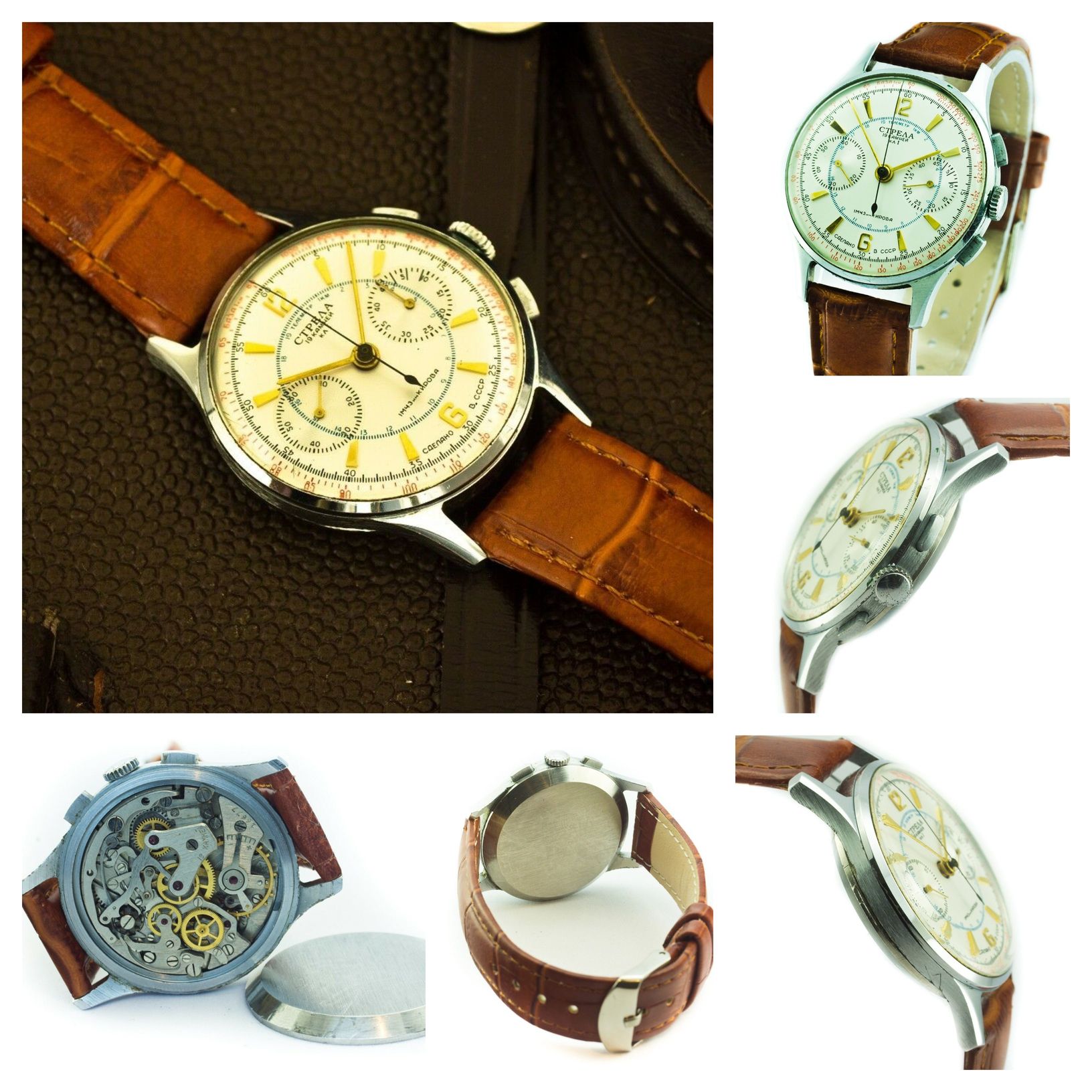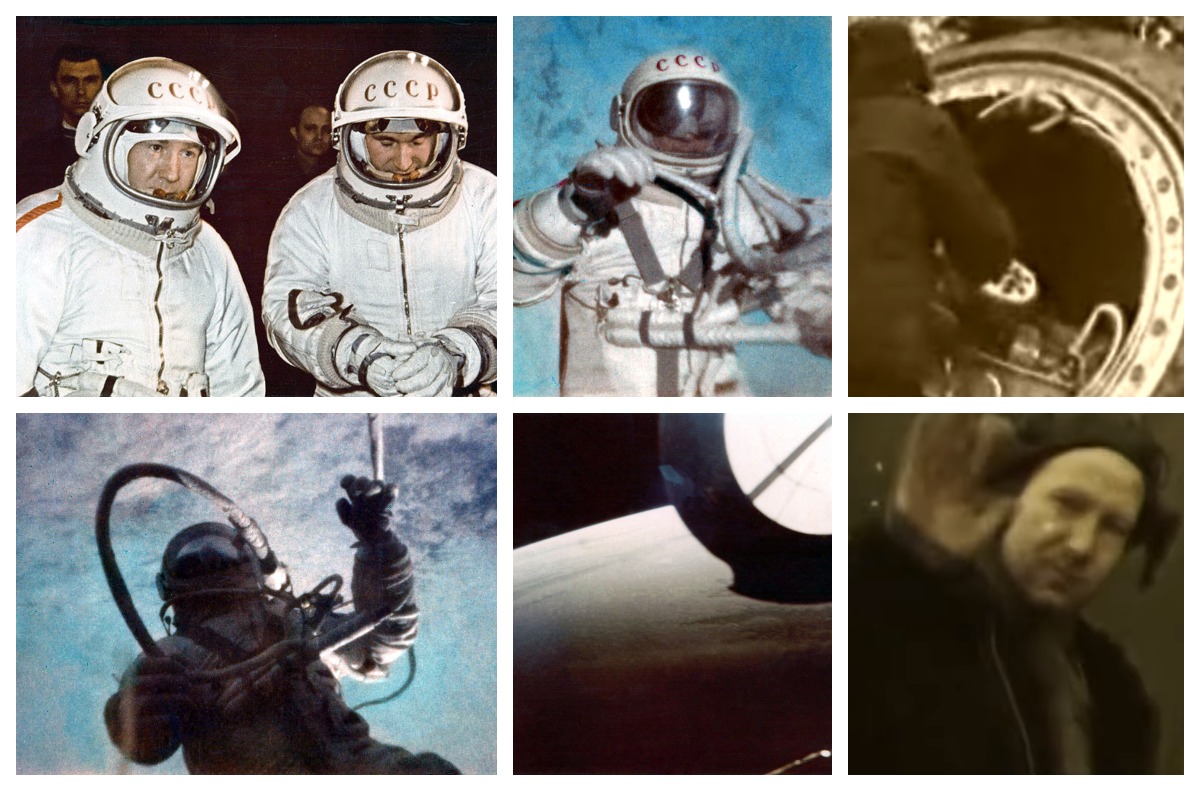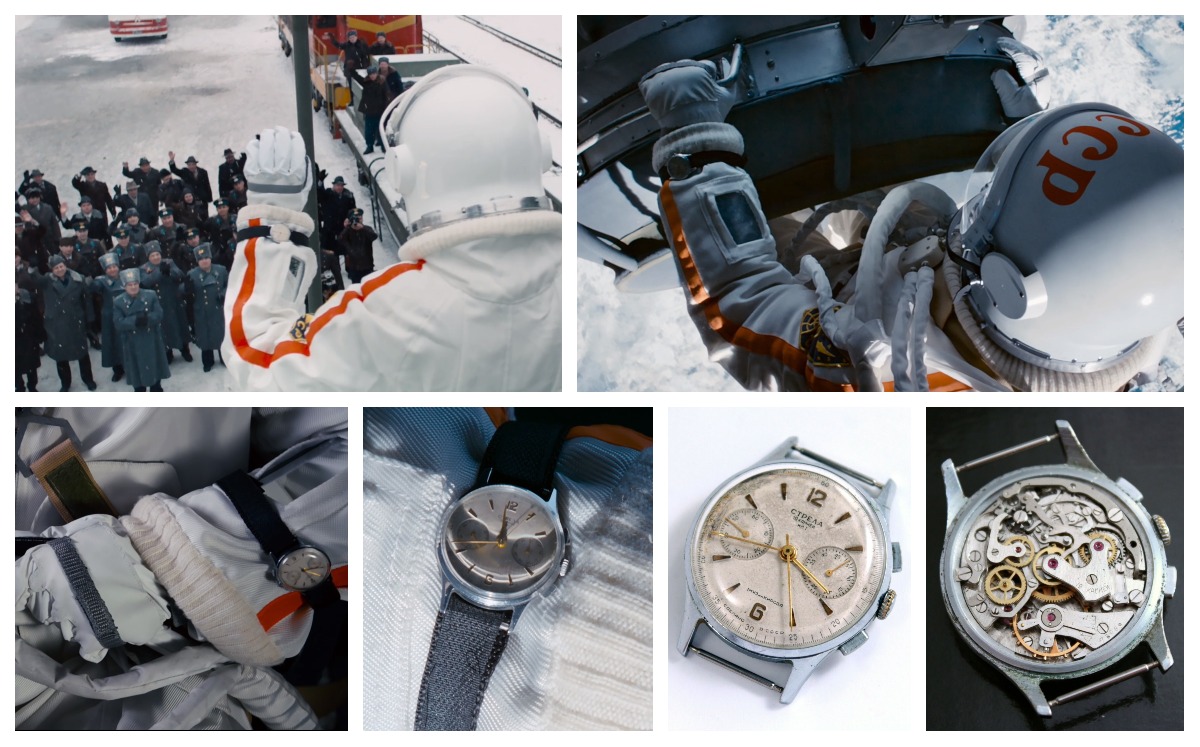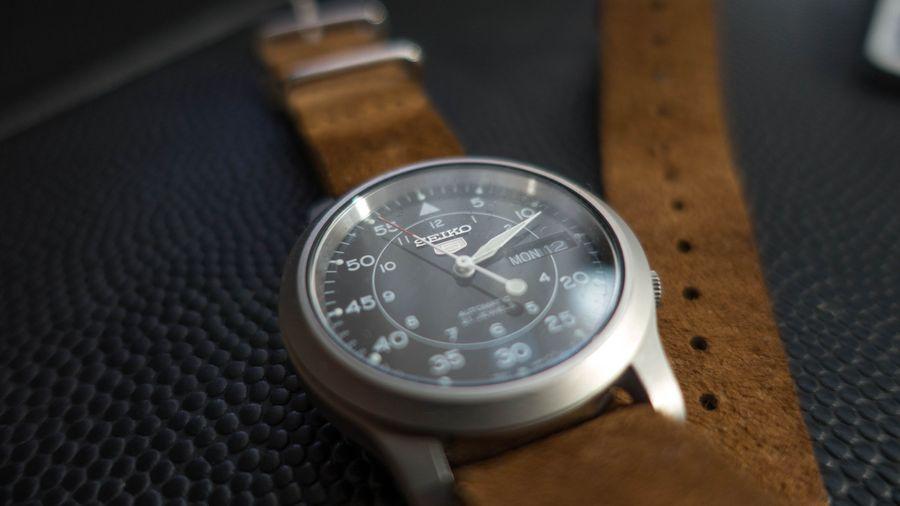Strela (СТРЕЛА) Chronograph
The original Strela Sekonda was worn by Soviet/Russian cosmonaut Alexei Leonov who became the first human to walk in space during the Voskhod 2 mission in 1965. The first Strela chronograph model was introduced around 1959 and at first, it was only available to the Soviet Air Forces and a few higher-ranking officials. Leonov was wearing Strela chronographs during mission preparation, flight training, and missions.
The now famous Russian space watch is housing the hand-wound column-wheel chronograph caliber 3017 - based on the Swiss Venus 150 / 152 calibers. The 3017 movement was later replaced by the 3133 manual wind chronograph movement made by Poljot (formerly First Moscow Watch Factory).
- Ref: Original Strela СТРЕЛА Chronograph
- Diameter: 36.00 mm
- Thickness: 14.00 mm
- Lug width: 18.00 mm
- Caliber: Poljot 3017

The model that Alexei Leonov wore in space has a cream dial with golden hour markers. The Strela brand name was written in Cyrillic: СТРЕЛА, which means “arrow”. It had Arabic numerals markers at 12 and 6 o'clock.
The watch has two registers, 45 minutes elapsed time and constant seconds hand and a central chronograph hand for measuring the elapsed seconds. The Strela has a chrome-plated case and a stainless steel snap case back. This historical timepiece has a diameter of 36mm, is 14mm thick and has a lug width of 18mm. On the original model, the dial and hands are protected by a plastic glass.

Leonov and his crew member Belyayev faced a lot of challenges during their mission: the pressure of Leonov's spacesuit increased uncontrollably, making it balloon and very hard to move and go back to the airlock. He entered the airlock head-first instead of feet first unlike instructed, relying on the door of the airlock to close itself automatically.
Unfortunately, the automatic door failed to close: with oxygen running out, he took the decision to depressurize his suit in the still-open airlock to be able to turn around and close the door manually, this exposed him to decompression thickness and he nearly had a heatstroke as his core body temperature increased by 1.8°C (3.2°F) in 20 minutes.
Later on, a crack in the hull made their oxygen system pump dangerous amounts of pure oxygen in their spaceship, threatening both men to trigger an explosion and almost killing them by oxygen poisoning: after temporarily powering down electrical instruments they managed to regulate the oxygen supply while having hallucinations and nausea. Several hours passed before the team saw oxygen levels returning to normal.

As the spaceship was supposed to return to Earth, the two cosmonauts discovered its automatic re-entry system no longer worked. So the pair fired the craft’s re-entry rockets manually. This should have separated the landing capsule, containing the team, from the orbital module. However, something went wrong: the orbital module was still connected to the landing module by a communications cable. As a result, both modules were spinning rapidly during descent.
Fortunately, the heat of re-entry burnt through the communications cable, saving Voskhod 2 from destruction: the landing module separated and its parachutes were deployed.

Eventually, their capsule landed into the Ural mountain range, far from the expected landing site. Leonov and Belyayev both knew that bears and wolves, made aggressive by mating season, lived in the area. However, the spacecraft carried a pistol with some ammunition.
Although the cosmonauts were quickly located by aircraft, the area was so heavily forested that helicopters could not land. Night arrived, the temperature dropped to -5 °C (23 °F). The electrical heater would not work, forcing cosmonauts to spend a freezing night in the capsule as the spacecraft's hatch had been blown open by explosive bolts.
A rescue party arrived on skis the next day. Together they chopped wood and built a small log cabin as well as an enormous fire. After a more comfortable second night in the forest, the cosmonauts skied to a waiting helicopter several kilometers away and flew first to Perm, then to Baikonur for their mission debriefing.
At the time, the Russians hailed the mission as a complete success. In fact, it had come close to ending in disaster, though these near-catastrophes were not revealed until many years after the return of Voskhod 2.
The historical Strela was featured extensively in the 2017 Russian film “The Age of Pioneers” (Russian: Время первых), also known as “The Spacewalker”, starring Yevgeny Mironov as Alexei Leonov and Konstantin Khabensky as Pavel Belyayev. This watch is, therefore, an amazing Omega Speedmaster alternative: on the 18th of March 1965, it's the first chronograph to have been in space!

Explore
Explore

The Omega Speedmaster is a legendary watch. It's a masterpiece that all watch enthusiasts want to have in their collection. The Speedmaster Professional was created in 1957 and ...

Rolex developed the GMT-Master for airline pilots and released it in 1954. In 1983, the Rolex GMT-Master II was released. This model has become iconic and a reference for many in ...

A lot of the devices we use in our day to day lives have been first developed for military applications, watches are no exception. The army extensively requested the development ...
Join us!
Be part of the conversation